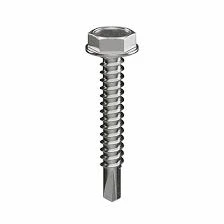Types of Steel Bracing for Structural Support and Stability
Understanding Steel Bracing Types in Structural Engineering
Steel bracing is an essential component in modern structural engineering, providing stability and support to various types of structures, from residential buildings to skyscrapers. The use of steel bracing helps mitigate lateral forces caused by wind and seismic activity, ensuring safety and durability. In this article, we will explore the different types of steel bracing, their applications, and benefits.
1. Diagonal Bracing
Diagonal bracing is one of the most common forms of bracing used in steel structures. It consists of diagonally placed steel members that connect the vertical and horizontal elements of a frame. This arrangement forms a triangular configuration, which is inherently stable and resists lateral forces efficiently. Diagonal bracing can be found in both tension and compression forms, providing flexibility in design. It is often employed in bridges and high-rise buildings to enhance stability during severe weather conditions or seismic events.
2. X-Bracing
X-bracing is a specific configuration of diagonal bracing where two diagonal members intersect to form an X shape between vertical columns and horizontal beams. This design effectively transfers lateral loads by allowing forces to be distributed evenly across the structure. X-bracing is particularly advantageous in structures requiring large open spaces, as it minimizes obstruction while maintaining structural integrity. Due to its robust design, X-bracing is frequently utilized in commercial buildings and industrial facilities, where large, column-free areas are essential.
3. K-Bracing
K-bracing features a unique configuration where the braces form a 'K' shape. Each brace connects the midpoints of the vertical columns to the top and bottom beams, creating a more compact design than traditional diagonal braces. K-bracing is effective in reducing the overall weight of the structure while still providing the necessary lateral stability. This type of bracing is often applied in seismic zones, as it offers greater flexibility and can absorb energy during an earthquake.
4. Chevron Bracing
steel bracing types

Chevron bracing is characterized by its V-shaped configuration, with braces sloping away from the center of the structure. This design allows for efficient load transfer and can be more visually appealing than other bracing types. Chevron bracing is particularly useful in buildings where aesthetics are a concern, as the V-shape can enhance the overall architectural design. It is commonly utilized in residential construction and commercial buildings, where it offers a balance between functionality and visual appeal.
5. Portal Frames
Portal frames are a form of bracing that combines vertical and horizontal elements to create a rigid structure. This type is often used in industrial buildings and warehouses, providing a clear span for various applications. Portal frames resist lateral forces primarily through the bending of their members, making them effective in low to moderate seismic regions. The simplicity and efficiency of portal frames make them a popular choice among engineers.
Benefits of Steel Bracing
The use of steel bracing offers numerous advantages in structural design. Firstly, it enhances the overall stability and strength of a building, allowing it to withstand various lateral forces. Furthermore, steel bracing can be cost-effective, as it often requires less material than alternative structural systems. Its durability and resistance to environmental factors, such as corrosion, make it a long-lasting solution for construction projects.
Moreover, steel bracing systems can be tailored to meet specific design requirements, ensuring versatility across different types of buildings. Engineers can customize bracing configurations based on architectural aesthetics, performance criteria, and budget considerations.
Conclusion
In conclusion, steel bracing plays a vital role in ensuring the safety and integrity of structures. With various types of bracing available, such as diagonal, X, K, chevron, and portal frame bracing, engineers have a multitude of options to enhance structural stability. Each type has its unique features and advantages, making them suitable for diverse applications. As the demand for resilient and efficient buildings continues to grow, the importance of understanding and selecting appropriate steel bracing types will remain a key focus in the field of structural engineering.
-
Weatherproof Plastic Expansion Anchors for OutdoorNewsJun.06,2025
-
Sustainability in the Supply Chain: Eco-Friendly TEK Screws ProductionNewsJun.06,2025
-
Load-Bearing Capacity of External Insulation FixingsNewsJun.06,2025
-
Double Head Bolts: Enhancing Efficiency in Industrial MachineryNewsJun.06,2025
-
Corrosion Resistance in Chipboard Screws: Coatings for Wholesale DurabilityNewsJun.06,2025
-
Butterfly Toggle Bolts : Enhancing Structural ResilienceNewsJun.06,2025
